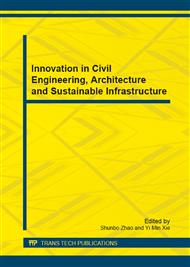p.337
p.341
p.346
p.350
p.358
p.362
p.366
p.371
p.378
Study on the Inwall Crack Extension and Fatigue Life Evaluation for Deep-Sea Steel Catenary Riser under Wave and Current Action
Abstract:
Aimed at deep-sea steel catenary risers(SCRs) transporting supercritical or dense CO2, this paper uses the macroscopic pipeline-transporting finite element model and the microscopic pipewall crack growth model to numerically simulate corrosive-inwall-defect-induced crack extension along radial direction for the deep-sea riser which is subjected to wave and current loads. Meanwhile, based on linear elastic fracture mechanics and fatigue crack extension theory, the effect of wave height on the fatigue life of the pipewall at touchdown zone is discussed. The above-mentioned study in this paper is expected to give a good reference to the similar study for oil&gas SCRs.
Info:
Periodical:
Pages:
358-361
Citation:
Online since:
November 2012
Authors:
Price:
Сopyright:
© 2012 Trans Tech Publications Ltd. All Rights Reserved
Share:
Citation:


